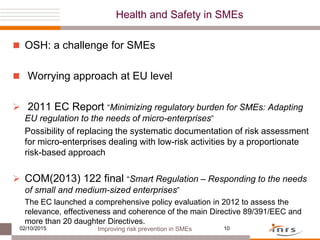Improving Crime Control: Directives For Faster Response And Prevention

Table of Contents
Enhancing Emergency Response Times
Faster response times are critical in emergency situations. Improving emergency response capabilities is a cornerstone of effective crime control. This involves optimizing dispatch systems and strengthening first responder capabilities.
Optimizing Dispatch Systems
Modernizing 911 systems is crucial for faster responses. This includes technological upgrades and improved training for dispatchers.
- Integration of GPS tracking: Real-time location data significantly reduces response times.
- Improved communication protocols: Streamlined communication between dispatchers, first responders, and citizens ensures efficient information flow.
- Real-time crime mapping: Visualizing crime incidents in real-time allows for better resource allocation and strategic deployment of officers.
- AI and predictive policing software: These technologies can analyze crime patterns and predict potential hotspots, enabling proactive deployment of resources.
These improvements translate to quicker response times, reduced crime rates, and optimized allocation of valuable law enforcement resources.
Strengthening First Responder Capabilities
Equipping and training first responders is equally vital. This involves advanced training, improved inter-agency collaboration, and the deployment of specialized units.
- Advanced tactical training: Regular and updated training keeps officers prepared for various scenarios, enhancing their effectiveness and safety.
- Body cameras: Body cameras provide accountability, transparency, and valuable evidence in investigations.
- Improved inter-agency communication systems: Seamless communication between police, paramedics, and firefighters ensures coordinated and efficient responses to emergencies.
- Specialized units (SWAT, hostage negotiation): These units provide expert capabilities to handle complex and high-risk situations.
Effective collaboration and efficient resource utilization during emergencies are key to improving crime control and ensuring public safety.
Proactive Crime Prevention Strategies
Reactive measures alone are insufficient; proactive strategies are essential for long-term crime reduction. This involves community policing, addressing root causes, and utilizing technology.
Community Policing Initiatives
Engaging communities is vital in crime prevention. Building trust between law enforcement and residents is paramount.
- Neighborhood watch programs: Empowering residents to actively participate in monitoring their neighborhoods enhances safety and deters crime.
- Community forums: Regular meetings between law enforcement and community members foster open communication and address concerns.
- Police-community partnerships: Collaborative initiatives address specific crime issues and promote community ownership of safety.
- Youth outreach initiatives: Investing in youth programs prevents involvement in crime and promotes positive development.
Strong community partnerships are a cornerstone of successful crime prevention and improve overall crime control.
Addressing Root Causes of Crime
Tackling the underlying social factors contributing to crime is crucial for long-term solutions.
- Investment in education: Improving education opportunities reduces poverty and provides alternative pathways for at-risk youth.
- Affordable housing initiatives: Addressing housing insecurity reduces stress and improves living conditions, mitigating crime risk.
- Job creation programs: Providing employment opportunities reduces economic hardship, a significant factor in crime.
- Mental health services: Addressing mental health issues reduces violent crime and improves overall community wellbeing.
- Drug rehabilitation centers: Providing access to substance abuse treatment reduces crime linked to addiction.
Addressing the root causes of crime leads to sustainable crime reduction and improves the overall quality of life.
Utilizing Technology for Crime Prevention
Technology plays a significant role in crime prevention and detection.
- CCTV cameras: Surveillance cameras deter crime and provide valuable evidence in investigations.
- Facial recognition technology: This technology can assist in identifying suspects and tracking criminals. (Address ethical considerations and privacy concerns here).
- Predictive policing software: Analyzing crime data to predict potential hotspots allows for proactive deployment of resources.
- Data analytics for crime hotspots: Identifying patterns and trends aids in developing targeted crime prevention strategies.
While technology offers powerful tools, ethical considerations and privacy concerns regarding its implementation must be carefully addressed.
Data-Driven Crime Analysis and Reporting
Effective crime control relies on accurate and readily available data.
Improving Crime Data Collection and Analysis
Comprehensive and accurate data are essential for effective strategies.
- Standardized data collection methods: Consistent data collection ensures reliable analysis and informed decision-making.
- Use of crime mapping software: Visualizing crime data reveals patterns, trends, and hotspots.
- Data-driven decision-making: Using data to inform policies and resource allocation enhances efficiency and effectiveness.
Better data analysis helps identify crime trends, predict future incidents, and optimize resource allocation for improved crime control.
Transparent Reporting and Public Access to Data
Transparency and accountability are crucial for building trust.
- Regular crime reports: Publishing regular reports keeps the community informed and fosters transparency.
- Online dashboards: Making crime data easily accessible online empowers citizens and facilitates community engagement.
- Community briefings: Regular meetings with law enforcement provide opportunities for questions and discussions.
Open access to crime data strengthens community involvement and improves trust in law enforcement.
Improving Crime Control – A Call to Action
Improving crime control requires a comprehensive approach that emphasizes both faster response times and proactive prevention strategies. Optimizing dispatch systems, strengthening first responders, fostering community engagement, addressing the root causes of crime, leveraging technology responsibly, and utilizing data-driven analysis are all critical components. Investing in these areas is an investment in safer and stronger communities. We need to advocate for improved crime control measures in our communities, support initiatives aimed at reducing crime, and engage with local law enforcement and community programs. Let's work together to build safer neighborhoods and improve crime control in our communities.

Featured Posts
-
 Trump Media And Crypto Coms Etf Launch A Boon For Cro Holders
May 08, 2025
Trump Media And Crypto Coms Etf Launch A Boon For Cro Holders
May 08, 2025 -
 Where To Start A Business A Map Of The Countrys Best Spots
May 08, 2025
Where To Start A Business A Map Of The Countrys Best Spots
May 08, 2025 -
 800 Million Week 1 Analyzing The Potential Impact Of Xrp Etf Approval
May 08, 2025
800 Million Week 1 Analyzing The Potential Impact Of Xrp Etf Approval
May 08, 2025 -
 The Potential Of Xrp Ripple A Practical Analysis For Long Term Investors
May 08, 2025
The Potential Of Xrp Ripple A Practical Analysis For Long Term Investors
May 08, 2025 -
 Star Wars Ai Concerns Lead To Andor Book Cancellation
May 08, 2025
Star Wars Ai Concerns Lead To Andor Book Cancellation
May 08, 2025
